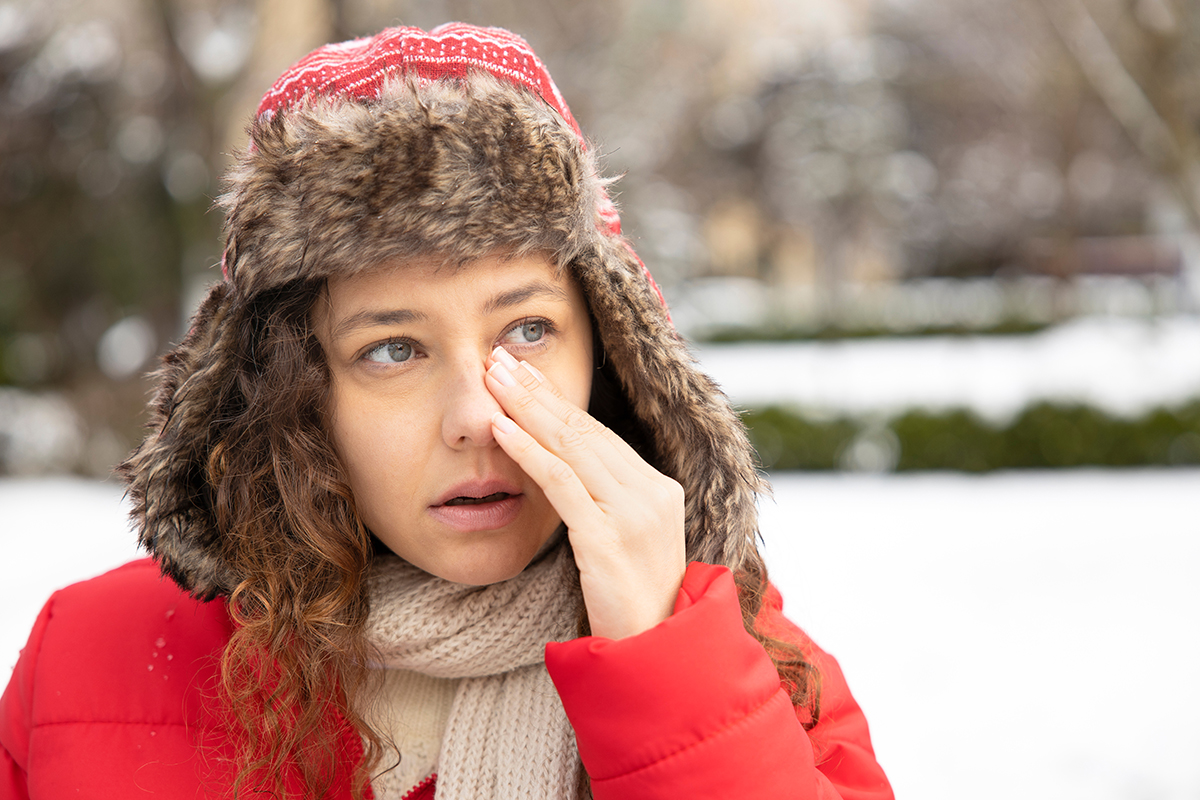
Although the uncomfortable symptoms of dry eye disease can strike at any time during the year, they are particularly common during the winter months. Cold, windy weather, low humidity and indoor heating can exacerbate the itching, burning, redness and foreign body sensation associated with dry eye disease. In this post, the ophthalmologists at Wiles Eye Center discuss some of the best ways to combat dry eye symptoms during Kansas City winters.
Run a Humidifier Indoors
One of the first things you can try to minimize dry eye symptoms during the winter is to run a humidifier indoors. This will add moisture back into the dry air that can help soothe dry eyes.
Avoid Heat Blowing Directly on Your Face
Blasting your car’s heater directly in your face or sitting under a heating vent can worsen your dry eye symptoms. Angle your car’s vents away from your face and, if possible, shift your furniture around so your house’s heating vents are not directly blowing into your eyes.
Manage Screen Times
In colder temperatures, we naturally spend more time inside (and often using screens). But prolonged screen time exacerbates dry eye disease. Try to limit your leisure time spent watching television, playing video games and browsing social media on your smartphone or tablet. When using screens, take frequent breaks to give your tired eyes a brief respite.
Eat Eye-Friendly Foods
Consuming foods that contain high amounts of omega-3 fatty acids, like salmon, flaxseed or walnuts, can help to lubricate dry eyes. (An alternative option is to take an omega-3 supplement.) Foods rich in vitamin C, vitamin E and vitamin A are also eye friendly. These include citrus fruits, carrots, leafy green vegetables and sweet potatoes.
Try Artificial Tears
Artificial tears are a reliable way to get relief from dry eye symptoms. The tears add much-needed moisture back to the eyes.
Consult With Wiles Eye Center
If these lifestyle changes do not improve your dry eye symptoms, it may be time to consult with our team of experts. We can determine the underlying cause of the problem — it could be a lack of tears or a problem with the tears’ composition — and recommend the most suitable course of action.
Depending on your circumstances, prescription eyedrops, intense pulsed light therapy or tear duct plugs could resolve your troublesome symptoms. We will oversee your treatment and make modifications as needed so you can enjoy lasting relief from dry eye.
To request an appointment with our ophthalmologists to discuss your dry eye symptoms, please call or email Wiles Eye Center today.

Comments are closed here.